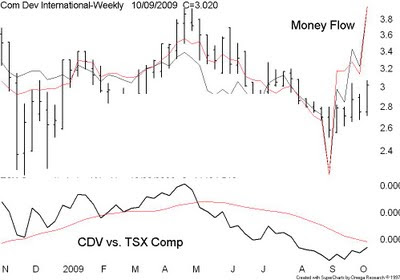I am still done with the CSTA in spite of Don Vialoux’s opinion that my comments were “over the top and not in (my) best interests.”
The reality is the CSTA is the only professional organisation that allows industry professional members to use the resources of their organisation (the CSTA) for the purpose of soliciting, urging, requesting, enticing or otherwise promoting their services to individual investors.
I know because I attended many public CSTA promotions at various financial forums and witnessed CSTA members pimping their services to private investors who were initially curious about the benefits of membership. A classic bait and switch technique.
The foxes ambushing the chickens
Log on to
www.advocis.ca - The Financial Advisors Association of Canada - a platform of knowledge, advocacy, community and protection enhancing the professionalism of financial advisors and planners in the best interest of the consumer. Only industry professionals can be members - scan the list of directors – no contact info – with the exception of
name@advocis.caScan the list of CSTA directors – the contact info is directed to their personal business enterprise. Some of the directors email reply names are almost egregious – not suitable for a professional organisation - some examples "Wi$eMoney.ca" and “analyzingmarkets.com” – only one director has non predatory contact information - Deborah Shaman, Ottawa Regional Director - ottawa@csta.org
The foxes ambushing the chickens
One would wonder why an industry pro who may - or may not have any accreditation or reputation of being a technical analyst would worm their way onto the list of CSTA directors. There can be only two answers – firstly it is an easy way to add some impressive stuff to their resumes – something like “Billy Bob is past President (or) former director of the Canadian Society of Technical Analysts (CSTA)”.
Secondly why would a director want to post all of their professional contact information on a busy web site?
The foxes ambushing the chickens
This predatory behaviour only adds to the public perception that technical analysis is “voodoo science” or “lunatic fringe” activity. The fact that holding a CMT does little to impress the regulators or the financial services industry as to accreditation is a serious problem for the profession. That is why some CMT’s will also acquire a CFA or CIM to ensure employment opportunity
Now before all you CMTs out there complain - go to Advocis / find an advisor
http://www.advocis.ca/content/find-ad-form.aspx and look at the search - Financial designation options CFA, CFP, CH.F.C, CIM, CLU, CMP, R.F.P, REBC, RHU and TEP – no CMT found here
There is more – look at IIROC the list CE Accredited Courses for Cycle 4 (2009-2011) Professional Development - IIROC is the national self-regulatory organization which oversees all investment dealers and trading activity on debt and equity marketplaces in Canada - the link:
http://cecap.ca/cy4//en/index.php?pageNum_pd_c3_members=0&totalRows_pd_c3_members=66&mod=providers_pdc3&cyc=04&cat_type=PDNo mention of the CSTA here but one can get 4 credits by watching a presentation by Thomson Reuters Markets Academy
Don I know you were – and I quote - “sad about Bill’s comments for a number of reasons: The comments were not specific. More information about his concerns are needed by the CSTA board before it can respond.”
So there you go – specifically yours – Bill Carrigan







